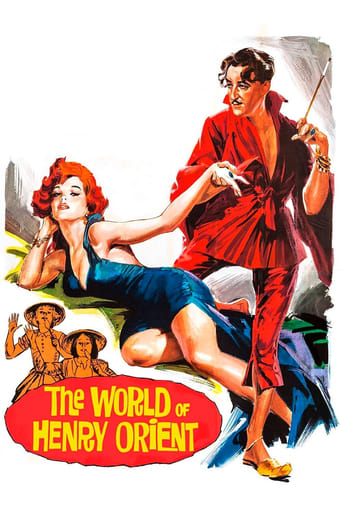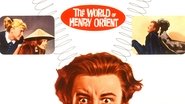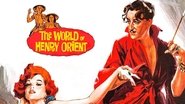gpaltrow2001
*SPOILERS*The 60 year-old women on IMDb who recall this as a favorite childhood memory should perhaps re-watch this from the jaded 21st century point of view, knowing that the filmmakers squeezed as much sex as they thought they could get away with in this film.I recently watched this for the first time, and was surprised at the blatant and not-so-blatant innuendos.The first thing that struck me was the opening scene, where director Hill got as many up-skirt panty shots as possible. If you pay attention, he does this again later. Why were panty shots needed, George?One of the reviewers here asked about the necessity of Boothy. It was pretty obvious to me this was a closeted lesbian relationship.Paula Prentiss wants to commit adultery, and c**k teases Henry Orient quite a bit.Henry Orient becomes the sex fantasy of mother and daughter, with one having intercourse, and the pubescent one thinking about it to the point of tears.The end of the movies shows the pubescent girls putting on heavy make- up, including "lipstick the color of a scarlet gash".Now that I have all of you prudes up in arms, let me say this-- It was an enjoyable film, mostly due to Tippy Walker. She showed such promise I'm sorry she didn't get into more films.The music and cinematography were great.Many reviewers here say they wanted more Peter Sellers, and that he wasn't funny enough. I disagree. Just the right amount, and he was very funny, especially the accents.I watched this movie because it got 3 1/2 stars out of 4 on Xfinity. Sorry, but it doesn't hold up that well. And denying the constant message of sex, however undertone, is simply wrong.
princebansal1982
This movie hasn't got that good of a rating. So I don't think it was really that good even when it was released. But with time it has really dated making it unwatchable. I couldn't even understand what we were supposed to like about the movie or where we were supposed to laugh.It is about two fourteen year old girls who are friends. One of them develops a crush on an mature guy, and they start following him. They meet him once. Then they meet him again. Then they meet him again. I know it is kind of repetitive, but so was the movie.Maybe it will be somewhat liked by the people of that time, but things have changed too much now. Give this one a miss.
middleburg
A truly lovely and engaging film, with surprisingly real and complex characters anchored in the perceptive viewpoints of adolescents -- their joys, confusions and hurts, paving the way for future joys, confusions and hurts. This is a remarkable film with countless moments to cherish--the adults with all their foibles, inconsistencies, concerns real or selfish--and those two girls exploring the world with wonderment and imagination born of exuberant discovery and painful denial. The feelings are so complex--it is often playful fun, but with a tinge of bittersweet wisdom that pervades practically every frame of the film. And New York. For those that love New York City, this film is a must. Filmed over 40 years ago--it is a joy to see all the familiar, beloved landmarks as they looked before. Only Woody Allen has filmed NYC with as much loving detail. From the opening scene on the East River where the girls first meet, to their first romp through the glories of Central Park (The Bow Bridge never has looked more elegant and graceful--and the Rambles never more wild and rustic), Park Avenue in the snow with the Christmas tree lights all glowing (truly capturing the magic of NYC at holiday time)--to surprising scenes of Carnegie Hall, and the wonderful Greenwich Village neighborhoods with their charming mews and meandering streets. How appropriate that the girls' discoveries should take place in this beautiful, complex city. One final comment--Elmer Bernstein's film score is a sheer delight-befitting this delicate, but profound story--bathing the film in a musical glow as beautiful as New York City.
aimless-46
"You know, I don't know whether I ought to or not, but I feel awfully happy... in a sort of sad way" says Valerie Boyd to conclude the climatic scene of this nurturing film. George Roy Hill gets my vote for most underrated director. I don't know if it was intentional but Hill seems to have specialized in directing extremely difficult films ("Slaughterhouse Five", "The World According to Garp", "The Sting", and "Slap Shot") and did them all quite well. "The World of Henry Orient" (1964) certainly falls into this difficult category as his two inexperienced young stars were featured in almost every scene and alternated between location shooting and studio sound stage work. This will probably be regarded as Hill's best film, not because it is technically perfect but because few (if any) films have successfully interpreted an ambitious screenplay in such a subtle and lyrical manner. It is a story seen from the point-of-view of two 14-year old girls who the viewer first meets at the moment they first meet each other. Gil (Merrie Spaeth) and Val (Elizabeth Walker) are prep school students in New York City who immediately connect despite coming from very different backgrounds and being in different developmental stages. What distinguishes this from most film friendships is that both are loners who are comfortable enough with each other to maintain their own individuality, even dressing differently. Hill managed to put the two young actresses at ease in front of the camera and to capture their natural energy, this is what gives their characters an unexpected authenticity. Just prior to seeing the film I had spent a couple days at a girls' fastpitch softball tournament and was struck by the true-to-life qualities of these two girls. They keep accidentally bumping into the title character, a vain concert pianist (Peter Sellers), and become his youngest fans. Dressed in Chinese hats (insert "Orient" here), the two girls stake out his apartment. He is engaged in a long-term and frustratingly unsuccessful attempt to seduce an ultra-paranoid married woman, nervous Stella Dunnworthy (Paula Prentiss). Henry and Stella fuel each other's paranoia and finally convince themselves that Stella's husband is employing the girls as detectives. The film's funniest scene occurs when Gil and Val convince Al Lewis (Grandpa Munster) that their mother is Jayne Mansfield. "The World of Henry Orient" is the only film I know of that takes the world of 13 and 14 year- old girls seriously. "Ghost World" (which placed a "Henry Orient" poster on the wall of Enid's bedroom), New Waterford Girl, and "Times Square" could be considered sequels-stories, what Gil and Val would become a couple years into the future when they were a couple years older and a little worn down by the additional experience with the world. It's also the first credible portrayal of the effects of divorce and parental neglect on children. "The World of Henry Orient" is more a coming of age story than a comedy although it does have some comic moments. Most of these involve the title character played by Peter Sellers. But don't expect the over-the-top performances of the older Sellers, his Henry Orient is more along the eccentrically restrained lines of his Fred Kite-trade union leader character in "I'm All Right Jack". Paula Prentiss is also quite funny in a restrained portrayal. Ultimately it is Hill's subtlety and nuance that are most memorable. Watch the expressions change on Gil's face as Val takes her on a fantasy trip involving the "wished for" return of her father in time for Christmas. Val quickly moves on to another subject as Gil quietly finishes processing the dream. Tom Bosley is especially good as Frank Boyd, Val's father. He does not appear until midway into the film. You learn that he has long doubted that he is actually Val's biological father and has kept the father- daughter relationship distanced, with both parents constantly traveling and Val left at school. With minimal dialogue Bosley shows Frank's slow realization that he loves his daughter more than anything in the world, despite his earlier doubts. This leads to one of cinema's most amazing climatic scenes, coming unexpectedly at least 10 minutes before the actual ending. Val returns home after accidentally discovering that her mother (Angela Lansbury) and Henry are having an affair. Although she does not reveal this to her father, watch how Hill (mostly wordlessly) illustrates the climatic revelations and the process of father and daughter finally finding each other. This visual narrative is why film is so powerful in the hands of a skilled and visionary director like Hill. This is a nice 16x9 print that could greatly benefit from captioning as the audio track is quite poor. Then again, what do I know? I'm only a child.








